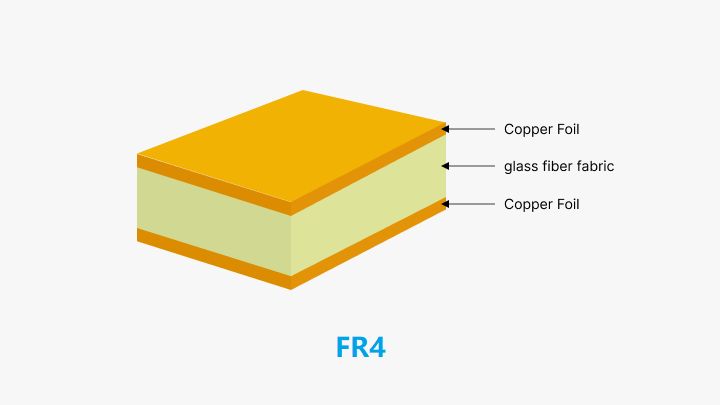Understanding the Substrate: Base of Printed Circuit Boards
PCB Substrate forms the foundation of a PCB, determining its physical, electrical, and thermal properties. Common materials include FR-4, CEM-1, Teflon, and Polyimide, each suited for specific applications, balancing cost and performance.
PCB Substrate is a base on which a printed circuit board, or PCB, is fabricated. A substrate forms the foundation of a PCB and is very important in determining the physical, electrical, and thermal characteristics of a PCB. Generally made of dielectric composite structures with epoxy resin, a PCB substrate has copper foil laminated on one or both sides. A solder mask is then applied over the copper layer to insulate it and prevent any unwanted contact that could disrupt the copper traces.
Types of Substrate Materials
FR-4
Features: Inexpensive, versatile, electrically insulative, with high dielectric strength.
Applications: Good for low-speed digital circuits, and complex multilayer designs.

CEM-1
Features: Less expensive than FR-4, using composite epoxy materials.
Applications: Primarily used in the manufacture of single-sided PCBs.
Teflon (PTFE)
Features: Very flexible, light in weight, and flame resistant.
Applications: Useful for applications that need high speed and high frequency.
Polyimide
Features: High Glass Transition Temperature Tg, more than 250˚C, thus very useful in high-temperature ranges.
Applications: Used to design flex circuits and rigid-flex boards. More costly when compared with FR-4.
Substrate in Multi-layer PCBs
It is used in multi-layer PCBs to sandwich the laminate core, binding all layers together through high temperature and pressure. This will ensure strength in the structure but at the same time maintain the electrical integrity across multiple layers.
Physical Properties
The rigid substrate provides extra strength and durability to the PCB.
A flexible substrate provides the option to build circuits that can be bent or twisted without affecting signal flow.

Thermal Properties
Glass Transition Temperature (Tg): This is the temperature at which the substrate material changes from a rigid state to a soft state. A PCB operates below this Tg so that it retains structural integrity.
Decomposition Temperature (Td): This is the temperature where the substrate undergoes chemical decomposition.
Coefficient of Thermal Expansion (CTE): This is a measure of the rate at which a material expands upon heating. The greater the size increase by expansion, the greater the internal stress and potential for damage.
Thermal Conductivity (k): This is the measure of the rate at which a material conducts heat through itself. It becomes important in high-power applications where thermal dissipation is critical to manage.
Electrical Properties
Dielectric Constant (Er): The ratio of the permittivity of a substance to that of free space. Typical values range from 3.5 to 5.5.
Surface Resistivity (ρS): This is a property or the ability that shows the substrate resistance to current leakage along its surface. The value varies typically between 103 to 109 megaohms and often depends on temperature and moisture.
Electrical Strength: Electrical strength refers to the capability of the dielectric material in withstanding electrical breakdown, measured in volts.
Conclusion
The right choice of the material for a PCB substrate is very critical in terms of the electrical and thermal performance of the board. FR-4 and CEM-1 are the main options towards cost-effective solutions: FR-4, due to its versatility; CEM-1, if it is a single-sided PCB. Applications requiring high performance utilize materials like Teflon and Polyimide for their excellent thermal and electrical properties, even though the cost could be higher. Thus, knowledge about properties and uses of different substrate materials allows design and fabrication of PCBs to fulfill specified performance requirements.
Hot Tags:
Contact us

If you can't find what you're looking for, please contact us.
Article

FR4 is a favored PCB material for its cost-effectiveness and versatility. However, its thickness tolerance impacts mechanical strength, thermal performance, and electrical efficiency, affecting overall PCB reliability and performance.

PCBs (Printed Circuit Boards) are fundamental in electronics, composed of multiple layers like silkscreen, soldermask, copper, and substrate, chosen for specific electrical functions.

Most electronic circuits are mounted on PCBs, or Printed Circuit Boards, which provide mechanical support and electrical interconnection of electronic components. There are, however, special applications that involve the use of single and double-sided PCBs, multi-layer PCBs, or even rigid and flexible PCBs with aluminum backing, targeting medical, industrial, auto, and aerospace industries. They may use materials such as fiberglass, epoxy, aluminum, and others.
